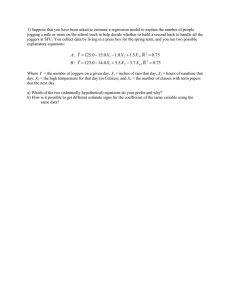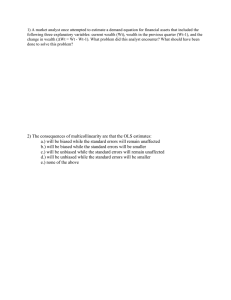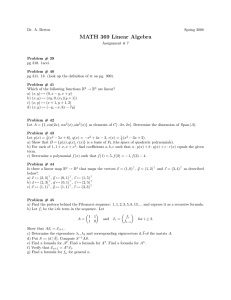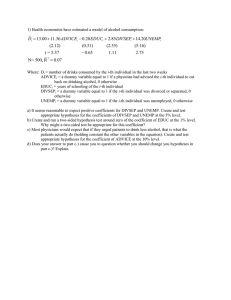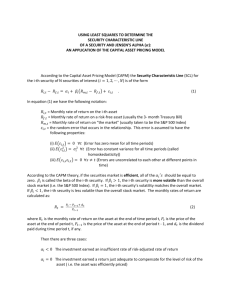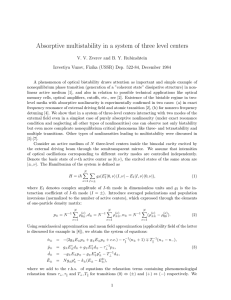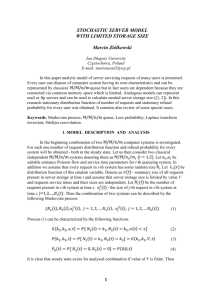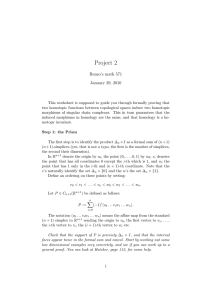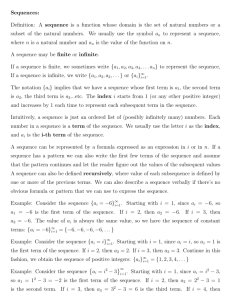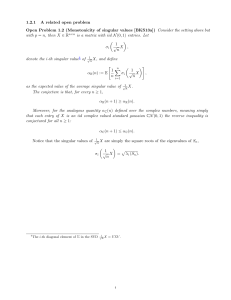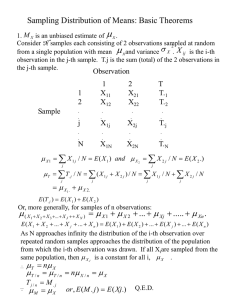1) The Minister of Health would like to know the... contracted you to provide these services. You estimate the following...
advertisement
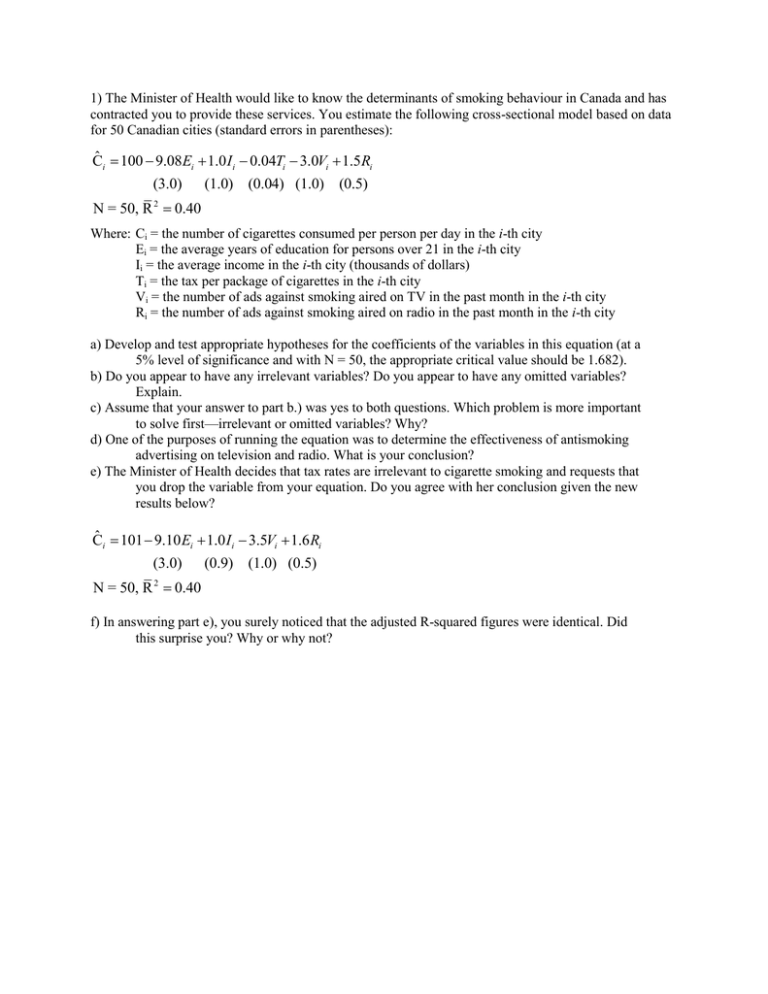
1) The Minister of Health would like to know the determinants of smoking behaviour in Canada and has contracted you to provide these services. You estimate the following cross-sectional model based on data for 50 Canadian cities (standard errors in parentheses): Ĉi 100 9.08Ei 1.0 I i 0.04Ti 3.0Vi 1.5Ri (3.0) (1.0) (0.04) (1.0) (0.5) N = 50, R 2 0.40 Where: Ci = the number of cigarettes consumed per person per day in the i-th city Ei = the average years of education for persons over 21 in the i-th city Ii = the average income in the i-th city (thousands of dollars) Ti = the tax per package of cigarettes in the i-th city Vi = the number of ads against smoking aired on TV in the past month in the i-th city Ri = the number of ads against smoking aired on radio in the past month in the i-th city a) Develop and test appropriate hypotheses for the coefficients of the variables in this equation (at a 5% level of significance and with N = 50, the appropriate critical value should be 1.682). b) Do you appear to have any irrelevant variables? Do you appear to have any omitted variables? Explain. c) Assume that your answer to part b.) was yes to both questions. Which problem is more important to solve first—irrelevant or omitted variables? Why? d) One of the purposes of running the equation was to determine the effectiveness of antismoking advertising on television and radio. What is your conclusion? e) The Minister of Health decides that tax rates are irrelevant to cigarette smoking and requests that you drop the variable from your equation. Do you agree with her conclusion given the new results below? Ĉi 101 9.10 Ei 1.0 I i 3.5Vi 1.6 Ri (3.0) (0.9) (1.0) (0.5) N = 50, R 0.40 2 f) In answering part e), you surely noticed that the adjusted R-squared figures were identical. Did this surprise you? Why or why not? 2) Consider the following estimated semilog equation (standard errors in parentheses): ˆ lnSAL i 8.10 0.100 EDi 0.110 EXPi (0.025) (0.050) N = 28, R 0.48 2 Where: lnSALi = the log of the salary of the i-th worker EDi = the years of education of the i-th worker EXPi = the years of experience of the i-th worker a) Make appropriate hypotheses for signs, calculate t-scores, and test your hypotheses (where the critical value for N = 28 and a 5% significance level is 1.708). b) What is the economic meaning of the constant in this equation? c) Why do you think a left-side semilog functional form is used in this model? d) Suppose you ran the linear version of this equation and obtained an adjusted R-squared of 0.46. What can you conclude from this result?
